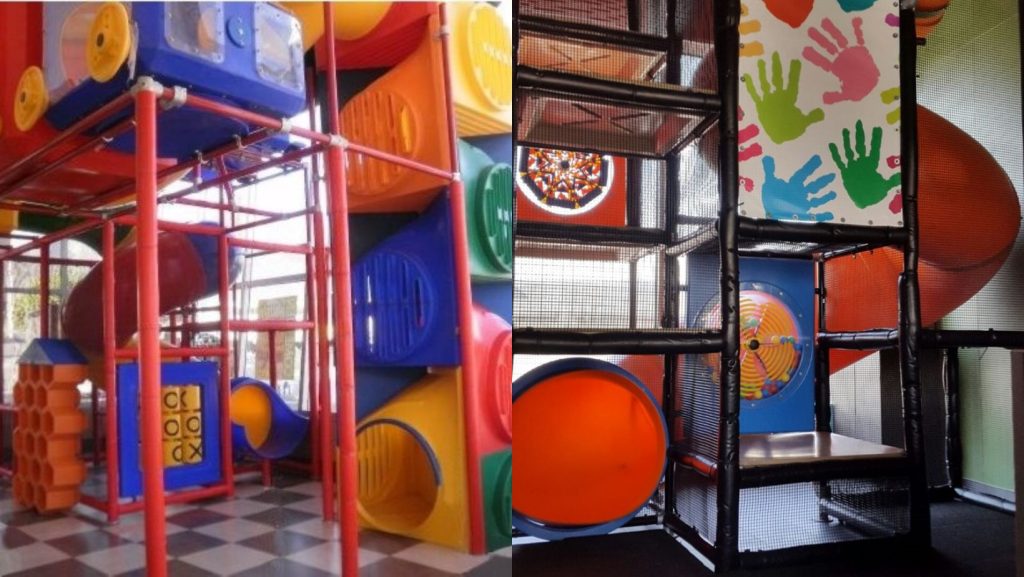
Operating a successful indoor playground business goes beyond having fun, colourful equipment. Safety should always be your top priority. A well-maintained, secure play area not only protects your young visitors but also builds parents’ trust, ensuring they’ll return time after time. By prioritizing indoor playground safety, you can foster happier children, confident parents, and a thriving playground business.
This blog will guide you through practical tips to create and maintain a safe play environment that protects children, supports your reputation, and grows your business.
Why Safety is Non-Negotiable in an Indoor Playground
The safety of your indoor playground isn’t just about protecting children from harm—it’s about safeguarding your business as well. Unsafe environments can lead to accidents, lawsuits, and damaging online reviews, all of which can tarnish your reputation.
Active safety means taking proactive measures, like selecting appropriate equipment and designing play areas thoughtfully. Passive safety, on the other hand, includes staff supervision and responding to incidents when they occur. Both are necessary, but focusing on active safety can greatly reduce the likelihood of incidents in the first place. For example, a space designed with rounded corners, padded surfaces, and clear pathways minimizes risks before kids even start playing.
Design Your Playground for Safety
A well-designed indoor playground sets the stage for safe and stress-free play. Pay attention to factors such as:
- Age-Appropriate Zones: Separate areas for toddlers and older children reduce the chance of collisions and injuries. Toddlers benefit from low-impact equipment, while older kids need space for active play.
- Non-Slip Surfaces and Padding: Flooring is a critical safety element. Non-slip materials prevent falls, while padded surfaces cushion inevitable tumbles.
- Clear Pathways: Open, obstruction-free pathways prevent accidental bumps and allow easy movement for both children and adults.
- Safety-Compliant Materials: Using equipment that meets local safety regulations ensures that you’re providing the highest standard of protection. Look for certifications when choosing your materials.
Additionally, your design should encourage parental supervision. Providing seating with clear views of play areas allows parents to keep an eye on their children while still enjoying their own downtime.
Implement Effective Safety Protocols
Rules and guidelines bring structure to your playground and ensure that everyone can enjoy the space safely. Start by creating simple, clear rules, such as:
- No running
- No sharp objects
- Take turns on equipment
Staff training is another essential layer of safety. Employees should be skilled in supervising different age groups and trained to manage potential conflicts or accidents. Certified first-aid training is a must for your team as it equips them to handle emergencies with confidence.
Visible first-aid stations reinforce a sense of security for parents and ensure that medical supplies are always within reach. Combine these efforts with a system of regular safety reminders, such as signs or announcements, to keep everyone informed and vigilant.
Regular Maintenance and Inspections
Even the best-designed playground can present risks without proper maintenance. Routine inspections are vital for catching potential hazards like loose screws, worn-out mats, or damaged equipment. Create a playground maintenance checklist tailored to your facility, including daily, weekly, and monthly tasks.
Here’s an example:
- Daily Checks:
- Remove debris or tripping hazards.
- Inspect foam padding for tears.
- Weekly Checks:
- Tighten bolts and screws.
- Test equipment for stability.
- Monthly Checks:
- Examine wear and tear on surfaces.
- Look for rust or corrosion on metal parts.
Certified inspectors can also help uphold your safety standards by identifying risks you might’ve overlooked. Investing in professional oversight ensures that your playground remains a fun and secure environment.
Engage Parents in Safety Efforts
Parents are your allies in ensuring a safe play experience. When they understand and follow the guidelines, it creates a cooperative atmosphere where everyone feels responsible for children’s welfare.
Here are a few ways to engage parents:
- Enforce Supervision Policies: Require parents to remain on-site while their children play, and clearly communicate this rule during check-in.
- Provide Safety Reminders: Post easy-to-read signs or distribute handouts that explain the rules.
- Host Informative Sessions: Offer periodic workshops or Q&A sessions on playground safety. This can also be an opportunity to showcase your commitment to creating a secure play area.
Building relationships with parents helps foster a safety-first culture, benefiting both your business and its patrons.
Final Thoughts on Creating a Safe Play Environment
Safety is the heart of any thriving indoor playground business. By prioritizing key measures like thoughtful design, effective protocols, routine maintenance, and parent collaboration, you create a space where children can play freely, parents can relax, and your business can flourish.
If you’re looking to design or upgrade your indoor playground for maximum safety, contact SPI Plastics today. Together, we can create a space that brings joy and peace of mind to all who visit.